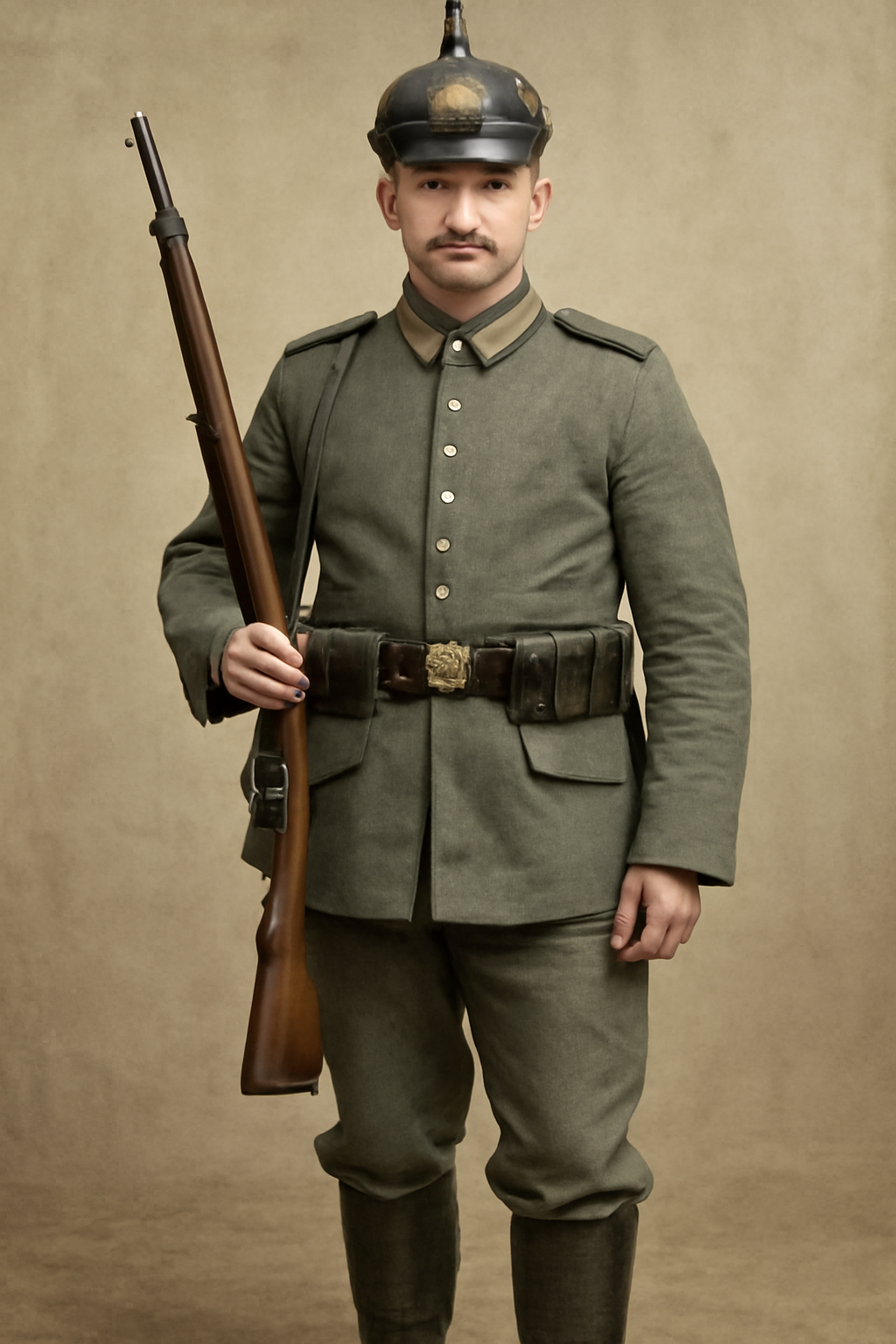
The Fascinating History of German Army Uniforms: From the Pickelhaube to the SS
Published on Jul 16, 2025
The Imperial German Army Uniform: A Symbol of Military Tradition and History
When we think of the Imperial German Army, we are not just reflecting on a military force; we are delving into a symbol of discipline, power, and the rich military history that played a pivotal role in shaping modern warfare. The Imperial German Army uniform, worn by soldiers from the mid-19th century through to the end of World War II, tells the story of this iconic military force. In this article, we explore the evolution of the German army uniforms across two World Wars, with a particular focus on the Prussian army uniforms of 1870, WW1 German uniforms, and the SS uniform for females.
The Origins and Evolution of the Imperial German Army Uniform
The origins of the Imperial German Army uniform can be traced back to the Prussian military traditions that were influential during the 19th century. In 1870, the Prussian army uniforms 1870 became one of the most iconic military styles in Europe. The uniforms were characterized by sharp lines, a sense of order, and a distinctive use of colors such as dark blue and red, which were representative of Prussia's military might.
These uniforms were not only functional but also symbolic of the Prussian military tradition, which emphasized discipline, honor, and a sense of pride. As Prussia became the dominant force within the newly unified German Empire in 1871, the Imperial German Army uniform continued to evolve, incorporating elements of the earlier Prussian style while adapting to the realities of modern warfare.
For more on the history of these uniforms and to explore authentic reproductions, check out our WW1 German Uniforms Guide.
World War I: The Iconic German Uniforms
During World War I, the German army uniforms underwent further developments. The WW1 German uniform was a reflection of the needs of soldiers on the battlefield. It was made of sturdy wool and featured a dark green color, with the distinctive pickelhaube helmet being a key feature of the uniform. The uniform also included leather boots, trousers, and a field tunic, which were designed to be practical for the conditions of trench warfare.
One of the most notable aspects of the WW1 German uniform was its attention to detail. The uniforms were designed to offer protection from the elements, while still allowing for mobility and functionality. They were also designed to showcase the power and prestige of the Imperial German Army, with elements like shoulder epaulets, brass buttons, and distinctive insignia serving as visual representations of rank and division.
For a deeper look into WW1 German soldier outfits, visit our WWI German Uniforms for Sale.
German Trousers in WWII: A Legacy of Military Design
As we move into the era of World War II, the German trousers WWII became a significant part of the military ensemble. The designs became more practical, focused on utility and comfort for soldiers in the field. The trousers were often made of a durable, breathable material that allowed for movement and comfort over long periods of wear, especially in harsh combat conditions. They were typically paired with tunics, boots, and helmets, completing the iconic WWII German soldier look.
The German trousers WWII also underwent design changes over the course of the war, as the German military adapted to evolving battlefront conditions. The designs evolved from early war styles to more utilitarian and practical versions, reflecting the changing nature of warfare.
The SS Uniform: A Dark Chapter in Military History
One of the more controversial and darker aspects of German military uniforms is the SS uniform for females. The SS (Schutzstaffel) was a paramilitary organization that played a major role in the enforcement of Nazi ideology during World War II. Female SS members wore a version of the standard SS uniform, which included a black tunic, cap, and distinctive insignia that identified their affiliation with the SS.
While the SS uniform represents a dark chapter in history, it is an important part of understanding the full scope of WW2 German army uniforms. Many collectors focus on these uniforms as part of military history, though they are often approached with caution due to their associations with war crimes and atrocities.
Explore our collection of WW2 German Army Uniforms for an in-depth view of these iconic pieces here.
Authentic Reproductions and Collectibles
For those interested in military history, authentic reproductions of the Imperial German Army uniform and other German military uniforms are available through specialized collectors and retailers. These reproductions are meticulously crafted to match the original designs, making them ideal for historical enthusiasts, collectors, and even film productions.
If you're looking to purchase high-quality WW1 German uniforms or explore other historical military garments, be sure to check out our extensive collection of authentic WWI German soldier uniforms and replicas here.
Table: Key Features of Different German Army Uniforms
Uniform TypeEraKey FeaturesPrimary UsePrussian Army Uniform 1870 | 1870s | Dark blue tunic, red collar, and distinctive helmet (Pickelhaube) | Military service and ceremonies
WW1 German Uniform | WWI (1914-1918) | Wool tunic, pickelhaube helmet, leather boots, field grey trousers | Frontline combat and trench warfare
WW2 German Trousers | WWII (1939-1945) | Durable, breathable fabric, designed for long wear under combat conditions | Frontline use, heavy duty
SS Female Uniform | WWII (1939-1945) | Black tunic, cap with insignia, functional but symbolic of Nazi affiliation | Waffen-SS paramilitary duties
Conclusion
The Imperial German Army uniform holds a significant place in military history, representing not just the power and discipline of the German Empire but also the military aesthetics that shaped both WWI and WWII. Whether you're a historian, collector, or just fascinated by military history, understanding the evolution of these uniforms provides insights into the larger narrative of the 19th and 20th centuries. With authentic reproductions and collectibles now available, enthusiasts can own a piece of history.
